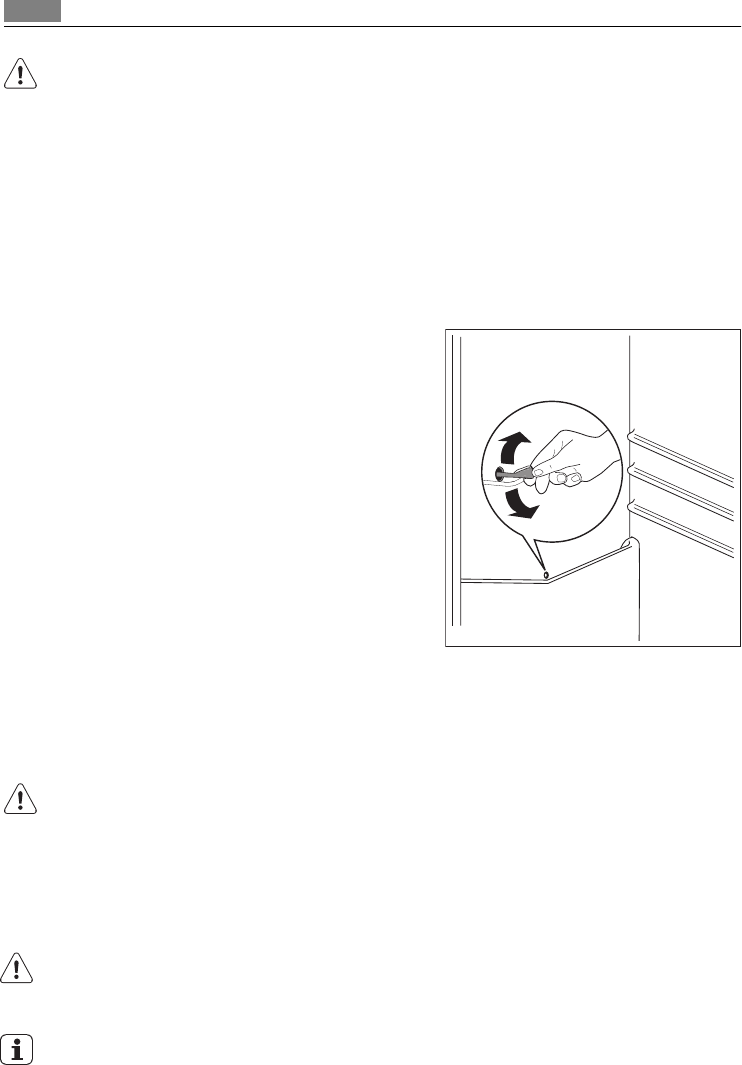
Take care of not to damage the cooling system.
Many proprietary kitchen surface cleaners contain chemicals that can attack/damage the
plastics used in this appliance. For this reason it is recommended that the outer casing of
this appliance is only cleaned with warm water with a little washing-up liquid added.
After cleaning, reconnect the equipment to the mains supply.
Defrosting of the refrigerator
Frost is automatically eliminated from the evaporator of the refrigerator compartment
every time the motor compressor stops, during normal use. The defrost water drains out
through a trough into a special container at the back of the appliance, over the motor
compressor, where it evaporates.
It is important to periodically clean the defrost
water drain hole in the middle of the refrigera-
tor compartment channel to prevent the water
overflowing and dripping onto the food inside.
Use the special cleaner provided, which you will
find already inserted into the drain hole.
Defrosting the freezer
A certain amount of frost will always form on the freezer shelves and around the top
compartment.
Defrost the freezer when the frost layer reaches a thickness of about 3-5 mm.
About 12 hours prior to defrosting, set the Temperature regulator toward higher set-
tings , in order to build up sufficient chill reserve for the interruption in operation.
To remove the frost, follow the instructions below:
1. Switch off the appliance.
2. Remove any stored food, wrap it in several layers of newspaper and put it in a cool
place.
CAUTION!
Do not touch frozen goods with wet hands. Hands can freeze to the goods.
3. Leave the door open .
In order to speed up the defrosting process, place a pot of warm water in the freezer
compartment. In addition, remove pieces of ice that break away before defrosting is com-
plete.
10
Care and cleaning


















